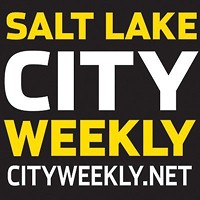Page 10 of 23
ROADSIDE ATTRACTIONS
Check out some of Utah's often-overlooked wonders
By Katherine Pioli
comments@cityweekly.net
Road trips are a summer classic—and, from north to south, Utah has some great destinations for any adventurer behind the wheel. Visit roadside attractions with real local flavor. Dip into Mormon history. Contemplate works of art. Travel the back ways and discover spectacular scenery. For travelers looking for places that tend to be far from the madding crowd, here are seven sights worth exploring.
Kodachrome Basin State Park—near Tropic on Highway 12
Inspired by the basin's color and shadow, the red-rock spires against seamless blue skies, the National Geographic Society, in 1949, gained permission from the Eastman Kodak film company to give the park its imagination-stirring name. Found in a remote south-central part of the state, Kodachrome has few visitors and a geology that tells of Earth's great shifts and changes through time.
Moqui Caves—Kanab
This kitschy roadside museum, located inside a sandstone cave, houses a collection of arrowheads, American Indian pottery, rocks and minerals from around the world. But, the real reason to visit is Lex Chamberlain. Chamberlain's family has owned and operated this attraction for more than 50 years, and Lex personally serves as tour guide and storyteller giving visitors his own account of local history—from the Anasazi to the Mormon pioneers—to "acquaint visitors with the experience of the inhabitants of southern Utah."
Best Friends Animal Shelter—Kanab
Just down the street from the Moqui Caves is Angel Canyon, home of Best Friends, a beautiful no-kill sanctuary for all types of unwanted, abused and abandoned animals—pigs, horses, rabbits, dogs, cats and others. The sanctuary has, since the early '90s, operated as a nonprofit charity. The work they do to promote animal welfare is unmatched. If you have children, take them to Best Friends; they will think they've died and gone to heaven.
Cove Fort—near Beaver on Interstate 15
Geologically speaking, Utah has a lot of history on display. The state's pioneer past, on the other hand, isn't etched in stone and could fade away over time. Cove Fort is one rare example of pioneer history brought to life in the present. Built in 1867 as a safe haven for traveling Mormons, the stone fort is beautifully preserved and authentically furnished. Tour guides will show you around, and it's a great quick stop along Interstate 15.
Topaz Museum—Delta
In the dry flatlands of Utah's Great Basin desert lie the remains of a shameful piece of American history, the crumbling barracks of Topaz, once a World War II Japanese-American internment camp that housed 11,212 American citizens. The new Topaz Museum presents its inaugural exhibit this summer. The collections include photographs documenting camp life and artworks created by internees at the Topaz Art School. Housed in a restored barrack, the museum seeks to preserve the site and serve as a reminder of that infamous moment in our history when civil rights were so blatantly discarded.
Utah's Little Grand Canyon—San Rafael Swell
An uplift in the Earth's crust created central Utah's spectacular San Rafael Swell 40 million years ago, but it was the Swell's subsequent erosion that gave life to Utah's Little Grand Canyon. Located in the Swell's north end, 20 dirt-road miles from Castle Dale at the Wedge Overlook, the canyon's sheer 1,200-foot cliffs reveal a panorama of winding water, layered buttes, domes and spires that exemplifies the southern desert.
Golden Spike—near Corrine & Highway 83
It's pretty cool to stand on the spot where, on May 10, 1869, the final spike was driven in linking the First Transcontinental Railroad. A visitor center now stands where the Promontory train station and ticket office once stood. While the building doesn't house the actual Golden Spike—it is kept at the Cantor Arts Center at Stanford University—it does have a few exhibits and ranger presentations.
More by City Weekly Staff
-
4/2: A list of what local craft breweries and cider houses have on tap this week
ON TAP
- Apr 2, 2025
-
MUSIC PICKS APR 3 - APR 9
Blindlove, Hollow Hill, Drunk in June @ Kilby Court 4/3, Gareth Emery @ The Great Saltair 4/4, Johnnyswim @ The Commonwealth Room 4/4, and more.
- Apr 2, 2025
-
THE ESSENTIAL A&E PICKS FOR APR 3 - APR 9
Broadway in Utah: Life of Pi, Ballet West: The Rite of Spring, Stephen E. Strom: Forging a Sustainable Southwest
- Apr 2, 2025
- More »





